Now that we’re most of the way through a year with a pandemic spreading around the world, face masks have become a common piece of apparel. With the habit comes a slew of new questions. While people in some parts of the world already know the answers to many of those questions, mask-wearing has not been a part of American culture for very long, so we’re still looking for answers.
We’ve done our best to answer some of the questions you may have. For example:
- If you have a face mask with a replaceable filter, how long do those filters last?
- If you’re wearing a kind of mask that is disposable, how should you properly dispose of a used mask?
- How should you go about cleaning and disinfecting a reusable mask?
We touched on the storage aspect in that third post, but we’re going to go deeper into detail with it here today.
As part of our now every-day apparel, masks are kept on hand constantly. How should you keep it on hand, though? Is it safe to stow a mask away in a pocket or in your purse, to have it available when you need it, or should you store it in some other way?
Considering the Type of Mask
Some masks are easier to store than others. A full-face mask with a rubber surface, padding, thick straps, and replaceable cartridge filters is bulky and difficult to store, but it’s also pretty uncommon to see. They’re usually used in construction and other hazardous environments, not for every-day use. These masks are harder to store because they’re bulky, but they will fit many of the same criteria we’ll list below.
Disposable paper masks are on the other end of the spectrum completely. These are meant to be worn once and then discarded and are a common sight in hospitals (and medical dramas). Paper surgical masks generally don’t need to be stored, since you’re not washing and re-using them. You can store them temporarily according to the guidelines we’ll list below, but they shouldn’t be kept and reused long-term.

Cloth masks are somewhere in the middle. They’re reusable and should be stored properly to avoid contaminating surfaces around you. They’re relatively easy to store, which is part of the problem; many people feel they can just stuff one in their pocket until they need it. This isn’t actually a good way to go about it.
General Storage Guidelines
The CDC has specific guidelines for storing face masks.
If your mask is wet or dirty, you should store it in a plastic bag, sealed against the environment. A wet and dirty mask is a contamination hazard, and should not be used again until you can clean it.

You generally want to be careful with wet masks. This includes masks that have gotten damp with your own breath! See, one of the ways that masks work to filter out particles (like the coronavirus) is through electrostatic attraction. Even though the cloth of a mask isn’t a filter, it can attract particles through static electricity. This is a part of how many masks operate, in actuality, and is part of the effectiveness of both replaceable filters and N95s.
When your mask is damp, it has less ability to leverage this static electricity. This is why you should take off your mask when it’s not necessary to wear it, such as when you’re alone in the car or in your own home.
A wet and dirty mask is assumed to be contaminated. If you’ve been wearing it, it has perhaps trapped virus particles from external sources when you breathe in, reducing viral load and making it less likely that you’ll get enough to catch the disease. Conversely, if you’re infected – whether it’s the coronavirus, the typical flu, or just the common cold – the mask has trapped particles as you breathe out.
All of this means you should avoid handling a dirty mask, and the way you store it should avoid contaminating other things.
So, avoid putting a dirty mask in your purse or pocket. If you put it in your pocket, it will contaminate your hand and anything else you put in that pocket until you have the chance to wash not just the mask itself, but the garment with the pocket as well. The same goes for a purse; storing a dirty mask in a purse contaminates the purse and everything in it. It does you no good to wear a mask to filter out the virus when you then apply it directly to your face via chap-stick or your phone, right?
If your mask is dry, you have more flexibility. You should generally try to avoid storing it directly in a pocket or purse if you’ve used it, even if it’s dry, because of the aforementioned contamination. Still, the CDC says you’re safe to do so as long as the mask is dry. Just be aware that you will want to wash your hands or use hand sanitizer as necessary after touching anything the mask has touched. Second-hand contamination is relatively unlikely to cause an infection, but it’s still a possible vector, especially if you touch something and then touch your nose, eyes, or mouth directly.
The best option is to use a storage container that is dry and breathable, not sealed like a plastic bag. The CDC recommends a paper bag, but a mesh cloth bag also works. The goal is to isolate the mask from other items, without potentially sealing in moisture that could possibly foster dangerous mold or other grossness.
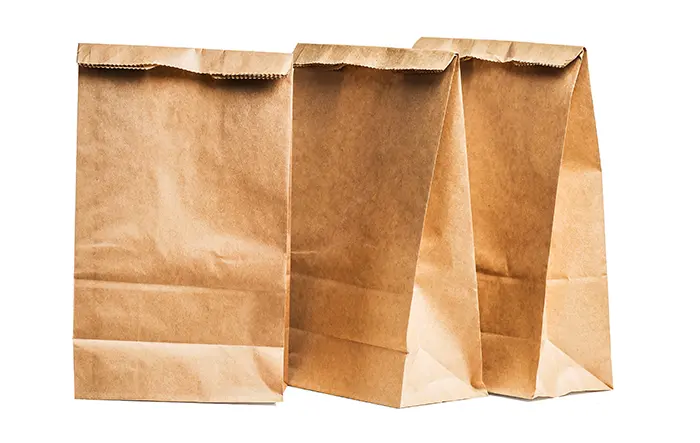
All of this kind of goes out the window if you’re using a gas mask style N95 or P100 mask with a much more permanent design. These can’t really be folded up, and are best stored simply in a case they came in, or in either a paper or plastic bag as necessary. If you have alcohol wipes or another form of cleaner on hand, you can clean the mask and let it dry before storing it away. You might also consider removing the filter when the mask is not in use.
Properly Storing a Mask
When you take off a mask to store it, you should fold it such that the outside surfaces are on the inside of the mask. This isolates the inside of the mask to prevent spreading environmental contamination. If you believe or know that you’re sick, you may want to keep the inside of the mask on the inside, to avoid contamination in reverse. A lot of it comes down to context.
To be perfectly honest, here’s what you should do when it comes to your mask storage:
- Keep several plastic and paper bags on hand to store masks as necessary. Be sure to use a fresh bag each time.
- Keep more than one mask on hand, so you can change from a used mask to a new one each time you take off one of them. A small supply of reusable masks should be enough as long as you wash them regularly.
- When you remove a mask, put it directly into the appropriate storage container, either a plastic or paper bag. You can try to fold it up appropriately, but as long as you don’t intend to remove it before the next time you wash it, it doesn’t matter too much so long as it’s stored away.
- Wash your hands or use hand sanitizer after every time you handle a dirty mask, including taking your mask off. When taking off your mask, try to handle it only by the ear loops, never the surface of the mask itself.

For long-term storage, clean your mask before putting it away, and store it in a cool, dry place. You don’t want your mask to absorb moisture or environmental contamination when you have it stored away, and no one likes a musty, dusty mask.
Other Mask Considerations
Many cloth masks have metal bits for a nose piece, which may be adhesive objects you can stick onto your own mask, or might be woven or sewn into the mask itself. Be careful when storing these kinds of masks, particularly when you fold the mask over for storage. Repeated flexing of this metal piece can break it, and the more flexible it is, the more likely it is to break. Most nose pieces are made of thin, flexible aluminum, which can break quite easily.
If your nose piece breaks, it’s generally easy to replace. The aluminum pieces can be bought in bulk from Amazon or from mask supply stores, generally for something around $5 for 50 of them. It’s not too expensive to replace, but it can be a bit of a hassle.
This is, incidentally, another reason why you might not want to store your mask in a pocket. Folding a mask to put it in a pocket generally means compressing this nose piece, which makes it more likely to flex and eventually break.
Of course, this isn’t a concern at all if you’re wearing a simple reusable mask with no nose piece. In that case, you don’t have to worry about how you fold it up at all beyond keeping one surface or the other on the inside.

Should You Buy a Mask Case?
As with anything that becomes a trend, people are looking to capitalize on it. Selling masks and filters are one thing, and it’s necessary to keep masks in good supply. Other accessories, like ear savers, can make it more comfortable to wear a mask.
One thing you may have seen on the market is a mask case. Mask cases run the gamut from tins to vinyl pouches to leather storage cases to repurposed miniature purses or wallets.

Should you bother with a permanent mask case? That’s entirely up to you. If you’re interested, you should use them correctly as much as possible.
If you want to buy a mask case, you have many options.
- If the mask case you’re looking at is not breathable – such as a sealed leather pouch, a tin, or plastic bag – try to only store clean masks in it. If you put a dirty mask into that kind of storage container, you will want to clean not just the mask but the container as well when you’re home.
- Make sure never to store a dirty mask in with clean masks. This will cross-contaminate them and all of your masks should be considered dirty.
- If the mask case you’re using is breathable – like a canvas or mesh container – you can store dry masks in it even if they’re dirty. Again, though, make sure to dedicate your container to only dirty or only clean masks. As such, you may want to have more than one mask case on hand.
Some mask cases are “sterilizer boxes” as well. These boxes may or may not actually function. The best way to clean and sterilize a mask is to wash it with soap and water (in the case of cloth masks) or wipe it down with a cleaning product (in the case of plastic or rubber masks). Paper masks, on the other hand, should be discarded safely rather than sterilized.
Mask cases that act as sterilizer boxes may function by using UV light and the ozone the light generates. UV light is known to sterilize surfaces, but it needs to be intense enough to actually sterilize, which may not be possible with a small box. It’s also currently unproven as a way to sterilize masks against the coronavirus. On the plus side, it does not damage the effectiveness of masks treated in this manner.
If you’re considering a sterilizer box, exercise caution. Keep in mind that there are a lot of grifters out there who might sell a box that simply has a blue or purple light pretending to be UV, or they may exaggerate their claims. We recommend practicing safe hand hygiene, storing masks in temporary containers like plastic and paper bags, and washing masks frequently to avoid contamination.




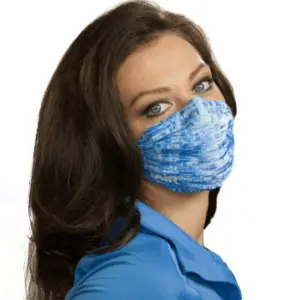

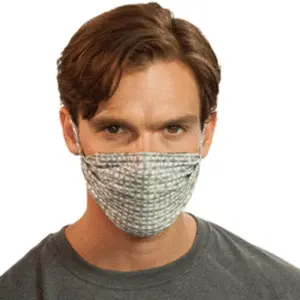





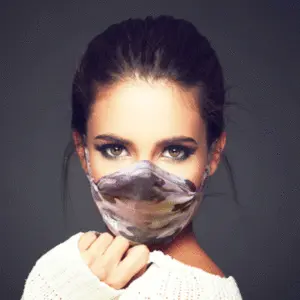
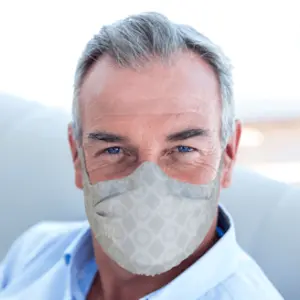




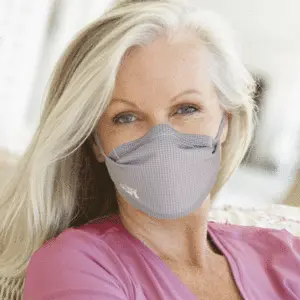

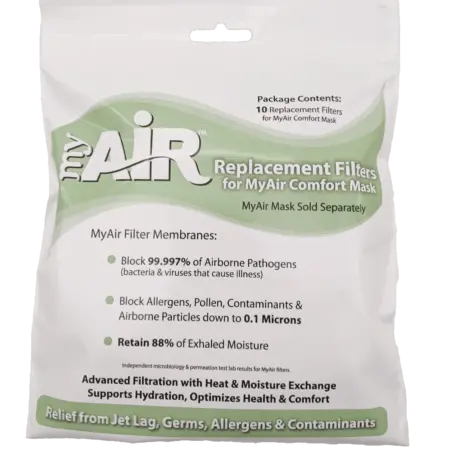
0 Comments